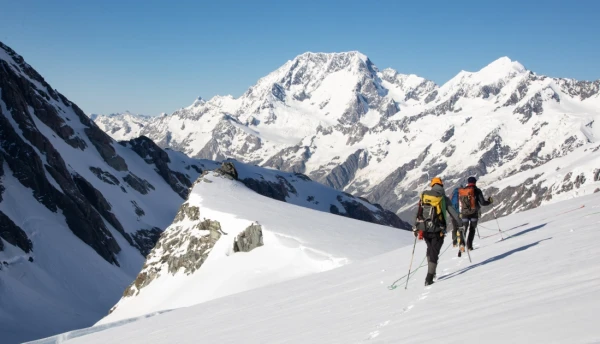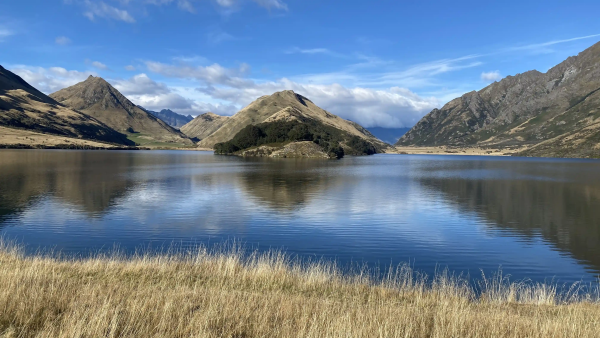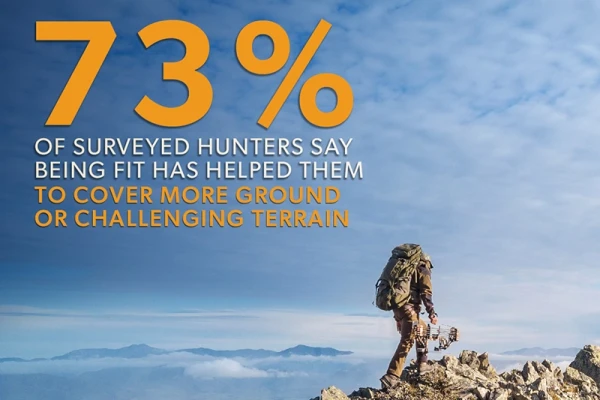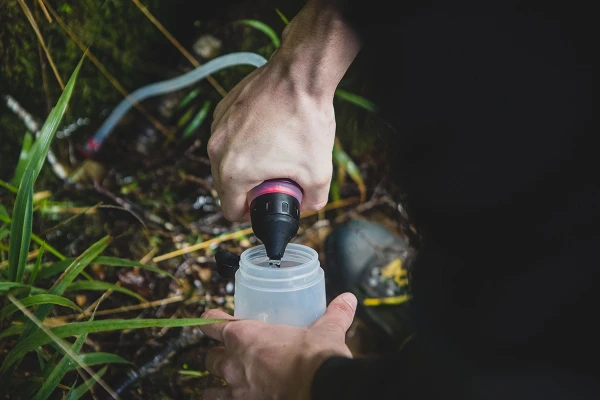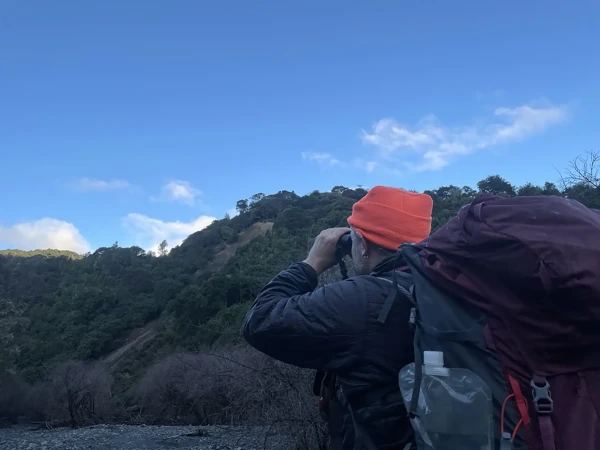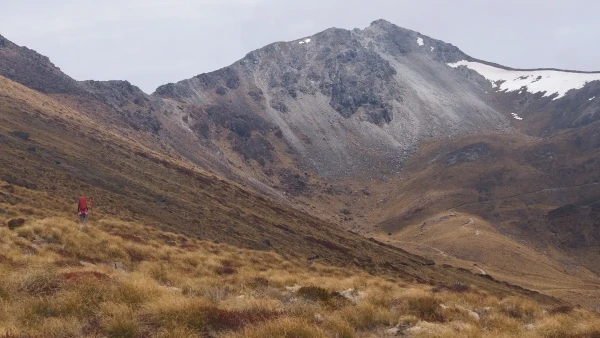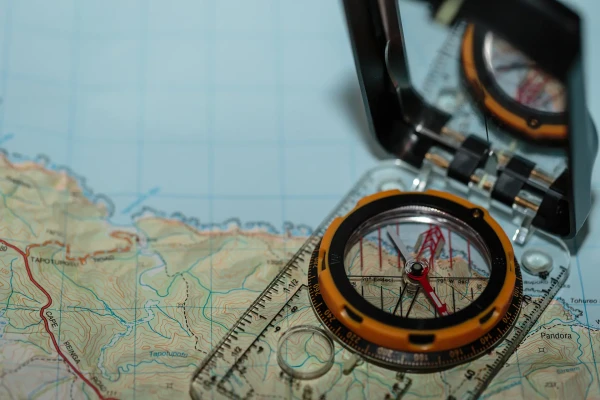August 2025
Avalanche Education in Aotearoa: Participation, Skills and Barriers
To stay safe in avalanche terrain, it's critical to check the NZ Avalanche Advisory forecast, get proper training and carry essential emergency avalanche gear. In August 2025, we asked Adventure Voice members about their avalanche training and skills. We wanted to understand how people approach avalanche education across a range of winter activities, including backcountry skiing or splitboarding, snowshoeing, mountaineering or alpine climbing, winter tramping and alpine hunting
Participation
A total of 1,073 Adventure Voice members responded to the survey, representing 18% of the outdoor research community. This response provides valuable insights into avalanche skills and education across key backcountry alpine activities.
Core Findings
Avalanche training
We asked participants if they had completed formal avalanche skills training courses or if they planned to do so in the future. Based on 1,073 responses:
18% (189 people)
completed training in the last 5 years
5% (53 people)
completed training 6-10 years ago
14% (148 people)
completed training 11 or more years ago
28% (299 people)
have not completed training but plan to in the future
36% (384 people)
have not completed training course and do not plan to in the future
Skill levels
We asked participants about their highest level of avalanche training. Based on 390 responses:
57% (224 people)
completed Avalanche Skills Course 1
14% (53 people)
completed Avalanche Skills Course 2
11% (44 people)
completed Avalanche Risk Management (ARM) Level 5
4% (14 people)
completed Avalanche Risk Management (ARM) Level 6
14% (55 people)
completed another avalanche training course
Barriers to avalanche education
We asked participants about their main reasons for not undertaking avalanche education or training. Based on 683 responses, participants said:
- Other commitments take priority: 40% (276 people)
- I don't enter or travel below avalanche terrain: 34% (235 people)
- It is too expensive: 25% (171 people)
- I don't have the equipment: 23% (158 people)
- Training opportunities are not available: 22% (153 people)
- I don't need it: 17% (114 people)
- I don't have anyone to do it with: 12% (79 people)
- I prefer to spend time on other activities: 11% (73 people)
- I have fitness or health factors that prevent it: 6% (39 people)
- The weather has been unsuitable: 2% (11 people)
- Other: 12% (82 people)
Note: Respondents could select multiple barriers, reflecting the complexity of factors limiting participation.
What This Tells Us
The insights gained from the survey provide a clear picture of current avalanche skill levels and the barriers people face in accessing training. These will help us develop tailored avalanche education resources to improve safety across this community.
PHOTO CREDIT: Bianca Bratton
Leading Outdoor Safety Concerns in Aotearoa
To mark one year of Adventure Voice, we asked our research community to share their thoughts on the leading outdoor safety issues in Aotearoa. The response was huge, giving us clear insights into what matters most to our community.
Participation
- 1,948 responses
- 32% of the Adventure Voice research community
Core findings
The top five safety concerns identified were:
- Rapidly changing weather conditions and the serious risks these pose.
- Lack of experience, skills and understanding of track conditions or difficulty, leading to poor decision-making.
- Inadequate gear and emergency communication devices, increasing risk and vulnerability.
- Need for clearer guidance on trip planning, risk awareness and how to respond in an emergency.
- Underestimating river crossings and water hazards, especially by beginner or international trampers.
What this tells us
The survey highlights key areas where the community believes further outdoor skill development is needed. These insights are invaluable for shaping our resources, education initiatives and campaigns, ensuring we continue to support everyone to have safe and enjoyable adventures.
PHOTO CREDIT | Merrick Rennell, Plan My Walk | Moke Lake Loop Track, Queenstown
May 2025
#ROARfit Campaign 2025 – How It Made an Impact
In November 2024, we surveyed the Adventure Voice hunting community to find out about their experiences of getting fit for the Roar. These findings helped us develop our #ROARfit safety campaign for 2025. At the end of the campaign, we wanted to know how well it had been received. To find this out, we conducted a post-campaign effectiveness survey in May 2025, just after the Roar season had finished.
Participation
- 283 responses
- 31% of the Adventure Voice hunting community
Core findings
Campaign effectiveness
63%
Saw the campaign
Behavioural impact
47%
Took action to get fit for the Roar because of the campaign
Community engagement
39%
Shared the campaign messages
34%
Encouraged others to do fitness preparation because of the campaign
Message effectiveness
Hunters overwhelmingly identified that the primary message of the campaign was the importance of preparation and fitness for hunting, particularly for the Roar, to prevent injuries and accidents, and enhance enjoyment of the hunting experience.
What this tells us
The survey helps us evaluate the effectiveness of our #ROARfit campaign so we can continue to make it even better. Through analysis of the data, we can understand how to more effectively engage and motivate hunters, identify the most relevant and compelling safety messages, and determine how to expand our reach with this audience.Ultimately, this helps us enhance safety for the entire hunting community.
March 2025
Drinking Water in the Outdoors: To Treat or Not to Treat?
Do you treat water from huts or natural water sources, like streams, or do you trust it’s safe to drink? We asked the Adventure Voice community about water treatment on their adventures to better understand what people typically do in the outdoors.
Core findings
Water treatment habits
- 27% always treat water from huts
- 23% do not treat water from huts
- 18% always treat water from natural sources
- 26% do not treat water from natural sources
Based on 1,630 responses
Most popular water treatment methods
79%
Boiling
49%
Filtration system
39%
Chemical tablets
7%
UV light system
3%
Drops
Based on 1,066 responses
How do people decide if hut water is safe to drink?
We asked the 922 people who do not always treat hut water about what influences their decision.
Key factors influencing people’s decision to drink untreated hut water:
- 48% the condition of the water tank
- 46% the condition of the roof and gutters
- 42% advice from a hut warden
- 39% trust that it will be fine
- 36% past experience of no problems
- 35% advice on official signage
- 34% if the water runs clear from the tap
- 20% if others are drinking it
- 20% word of mouth that it is safe
How do people decide if natural water sources are safe to drink?
We asked the 1,096 people who do not always treat water from natural sources about what influences their decision.
Key factors influencing people’s decision to drink untreated water from natural sources:
- 82% knowing there are no pollutants upstream
- 78% knowing the water source is clean
- 70% if the water is flowing
- 43% if the water is clear
- 30% past experience of no problems
- 20% trust that it will be fine
- 15% word of mouth that it is safe
- 10% if others are drinking it
How many people have become sick after drinking untreated water?
123 (8%)
Have been sick
1,327 (86%)
Have never been sick
77 (5%)
Don't know
Based on 1,544 responses
What this tells us
The survey provides valuable insights into the different ways people assess the safety of drinking water in the outdoors. With this understanding, we have developed clearer safety information and practical advice to empower people to make informed decisions about the water they drink outdoors, supporting them to stay healthy and have fun on their adventures.
- Read more about Drinking Water: How to Collect and Treat It Safely
February 2025
Satellite to Mobile: The Future of Emergency Communications
Changes in technology often result in changes to behaviour. In the outdoors, we have seen this over the past decade with mountain radios being replaced with other emergency communication devices, such as personal locator beacons and satellite messengers.
Aotearoa is on the cusp of the next technological change, with telecommunications companies starting to introduce satellite to mobile technology. With this survey we wanted to build an understanding of how this changing technology might affect the emergency communication device people take into the outdoors.
We had 1,469 responses to the survey, with people from across the full range of outdoor activities.
Core findings
We asked what emergency communication devices people took on their outdoor trips in the past year.
96%
took a mobile phone
74%
took a personal locator beacon (PLB)
22%
took a satellite messenger (e.g., Garmin inReach, Spot X, ZOLEO)
3%
took a satellite phone
When asked what people would do when their PLB expires,
42%
would replace the battery
18%
would buy a new PLB
35%
hadn’t decided
5%
would retire the PLB and use a different communication device
Key reasons for taking a phone
Of respondents who think they’ll take just a phone when satellite-to-mobile technology becomes widely available, would do so for the following reasons:
- Convenience (82%)
- Saving money (72%)
- It meets all emergency communication needs (50%)
- It reduces the weight they carry (47%)
November 2024
How Hunters Get Fit for the Roar
Every year MSC runs a safety campaign for hunters taking part in the Roar. The Roar is a highlight of the hunting calendar, with thousands of hunters heading into the hills for the deer rutting season in March and April. During this period, the number of severe hunting injuries doubles compared to an average month, with 40% of severe injuries to the knee and shoulder.
Ahead of this year’s campaign, we surveyed our Adventure Voice hunting community to find out about their experiences of getting hunting fit. These findings have helped us develop our Roar safety campaign for 2025 and improve safety for the wider hunting community.
Core findings
332 hunters
hunters in our Adventure Voice research community answered the survey.
1 in 7
said they had suffered an injury due to lack of fitness or fatigue
83% of 332
said being fit has helped them have a more enjoyable time on a hunt
73% of 332
said being fit has helped them cover more ground or challenging terrain.
Top Tips for Getting Fit for the Roar
Through the survey, we also gathered valuable information on the training activities hunters find most effective for preparing for a hunt and how they stick to their training.
Top four preferred training activities:
- Walking/tramping (78%)
- Shorter hunting trips (36%)
- Strength training, such as weights (35%)
- Wearing a pack while exercising (30%)
Top tips for sticking to fitness training:
- Going regularly (48%)
- Choosing an exercise I like (34%)
- Starting small and building up (25%)
- Having an exercise plan (21%)
- Going with a mate or mates (20%)
- Setting goals (18%)
Things that get in the way of fitness preparation included being time poor due to other commitments (61%) followed by lack of motivation (31%).
August 2024
Adapting on the Track: How Common is it to Change Plans in the Outdoors?
Our August Adventure Voice survey investigated how many respondents had changed their plans during an outdoor adventure and the factors leading to this decision. We set out to prioritise areas for enhanced safety messaging and identify education opportunities to help outdoor participants effectively monitor conditions on the go, and confidently make decisions around changing plans.
Core findings
92% of 882
respondents said yes, they have changed their plans while on an outdoor adventure.
Of those who said no,
33% of respondents
have had an experience where they wished in hindsight they had changed their plans.
The two main factors influencing this decision, or leading people to wish they had changed their plans in hindsight, were:
- Weather conditions deteriorating (62%)
- Taking longer than expected (23%)
Notably, those doing a short walk were much more likely to change their plans due to track or warning signage (11%) than those on other adventures (5%).
Key factors prompting plan changes: poor weather and underestimating track duration
We were pleased to see that 'changing plans on the go' is a very common occurrence in the outdoors. This survey confirms that at some point, most people will be in a situation where they will need to do this. Being prepared to change plans is essential and we have identified the following safety behaviours to promote:
- Check and understand the weather before leaving home.
- Prepare for deteriorating weather.
- Better gauge how long a track might take them.
- Assess the conditions while on the track so they can decide whether to continue or turn back, and be able to do so safely.
- Planning and identifying decision-making points on a track.
- Awareness of the ‘commitment’ heuristic trap and methods to avoid it.
May 2024
Investigating Preferred Navigation Tools in New Zealand's Outdoors
In May, we asked our Adventure Voice research community which navigation tools they use in the outdoors. With a better understanding of the tools people are using, we can create and deliver content that helps outdoor participants identify potential pitfalls with their tool of choice, and mitigate these with quality preparation and planning.
Core findings
91% of 771
survey respondents said they use a mapping app on their phones to help with navigation.
72% of 771
survey respondents said they also used a printed map to help with navigation.
What this tells us
We received over 700 responses, showing that phone apps are edging out the traditional map and compass for navigation. These results indicate a need for safety advice around protecting phones from damage, monitoring the battery and always having a backup.
Of the 771 respondents, 91% use a mapping app always (34%) or sometimes (57%), as opposed to 72% that either always (33%), sometimes (39%) or seldom (14%) take a map. Asked how frequently they carry a compass, 26% of respondents said never, while 59% said always (35%) or sometimes (24%).
Read our media release on this survey here.
